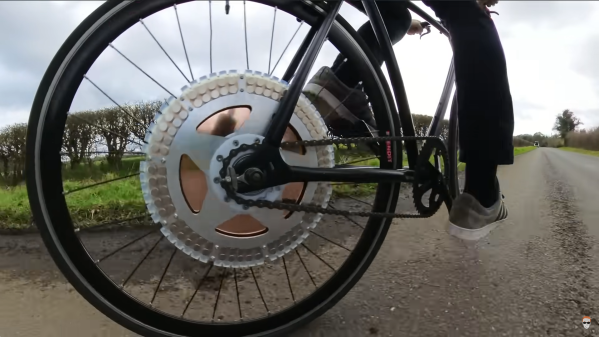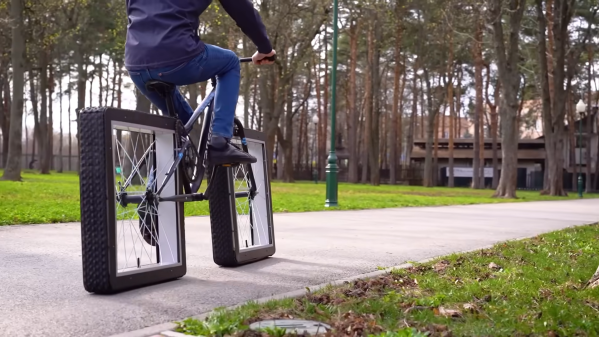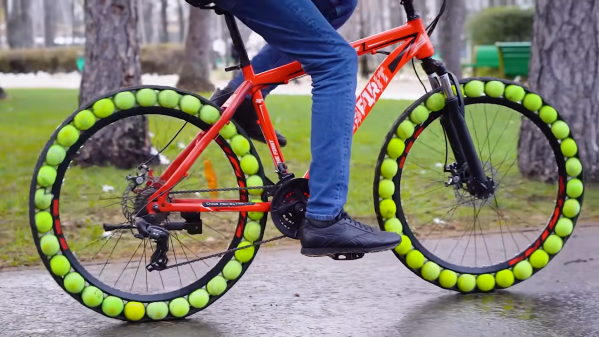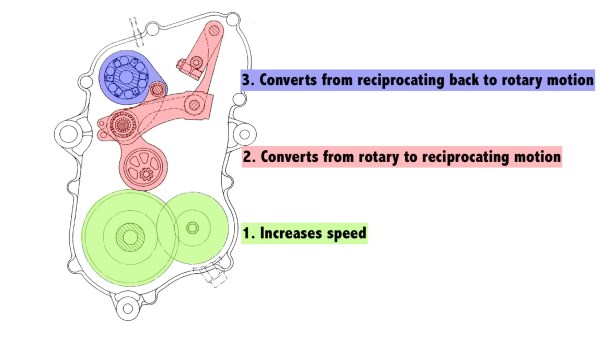When you think of a bicycle and an Eddy, you’d be forgiven for thinking first of Eddy Merckx, one of the most successful competitive cyclists to ever live. But this bicycle, modified by [Tom Stanton] as shown in the video below the break, has been modified by ditching its direct drive gearing in favor of using the friction-like eddy currents between magnets and copper to transfer power to the wheel.
Before even beginning to construct a mechanism for powering the bicycle, [Tom] had to figure out the basics: what kind of materials could be used for a metal disk? The answer, after much testing, turned out to be copper. What kind of magnets work best, and in what formation? Expensive high grade, aligned North to South pole for added eddy-dragging goodness. Would the mechanism work with any efficiency?
The end result is interesting to watch, and it’s not exactly as you’d have expected. Yes, eddy currents drive the copper hub, but at a 100 RPM difference. Where does all of that energy go? Hint: not to the wheel, and certainly not into propelling the bicycle. All in all it’s a fantastic experiment with unpredictable results.
If bicycle based bumbling about bakes your biscuits, you might appreciate this tennis-ball-enhanced ride too.
Continue reading “A Bicycle Powered By A Different Kind Of Eddy”







 The build starts by customizing a rollerblade wheel to act as the driven rear wheel of the bike. It’s fitted with a tiny sprocket allowing it to be chain driven. Welding some steel tubes then nets a small diamond-layout bike frame. It’s fitted with a chain ring, pedals, and steering assembly just like a full-sized bike, just in absolute miniature.
The build starts by customizing a rollerblade wheel to act as the driven rear wheel of the bike. It’s fitted with a tiny sprocket allowing it to be chain driven. Welding some steel tubes then nets a small diamond-layout bike frame. It’s fitted with a chain ring, pedals, and steering assembly just like a full-sized bike, just in absolute miniature.










